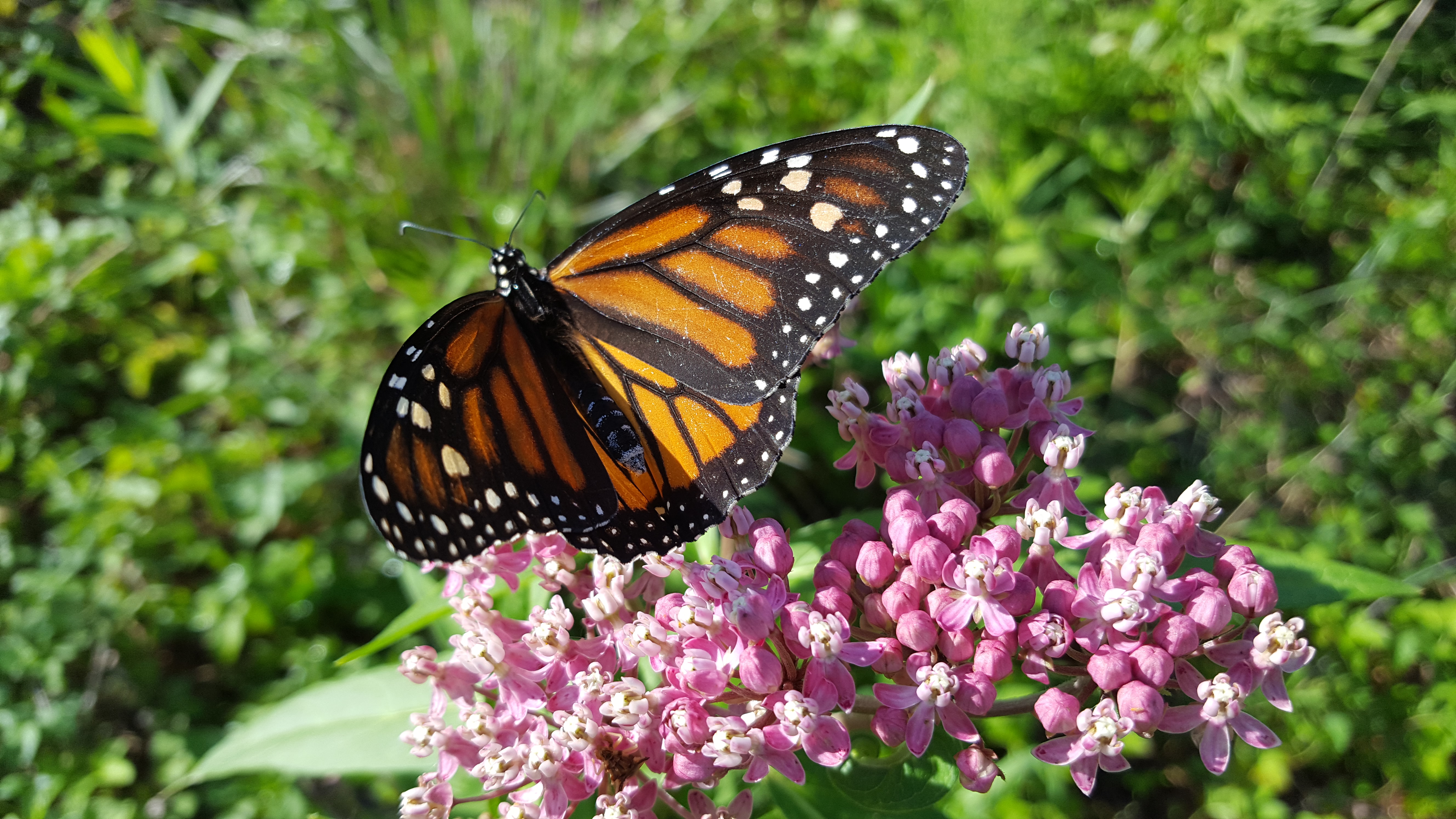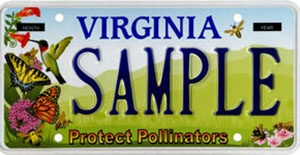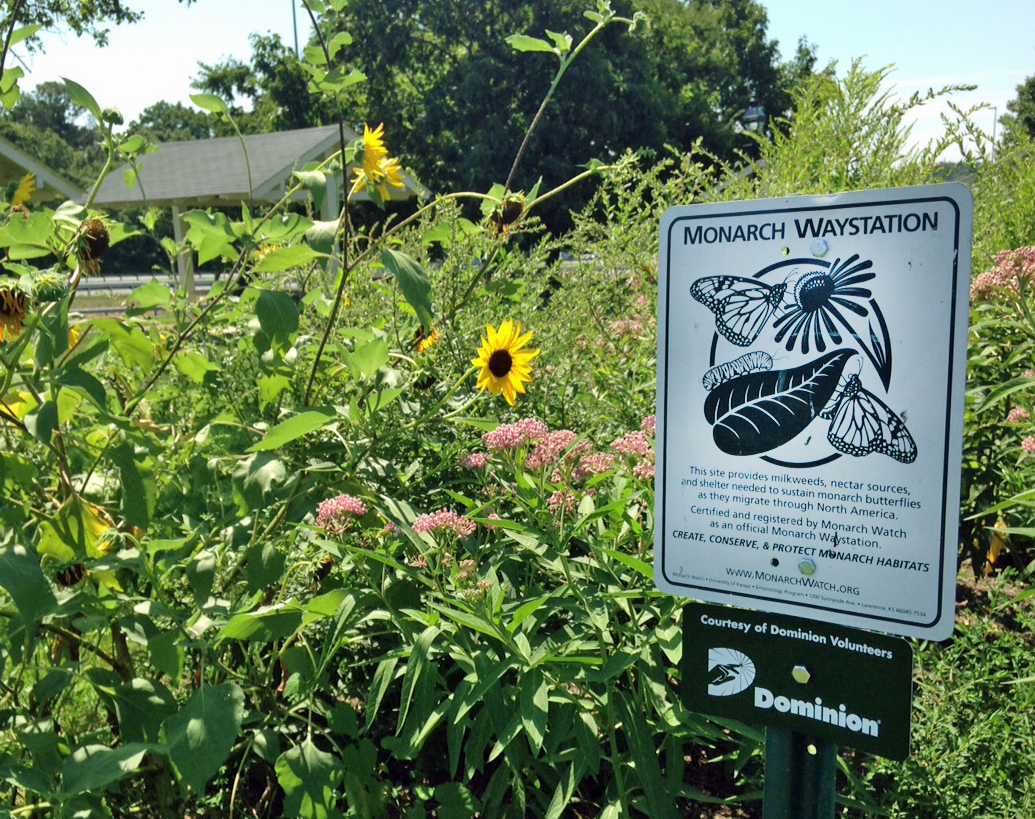Wildflower & Pollinator Habitat Program
 VDOT's Wildflower and Pollinator Habitat Program helps support natural areas along state-maintained roads and properties through the research, planning, implementation, and evaluation of conservation measures and related best practices. Natural areas along roadsides provide habitats to a variety of pollinator species. The program began in 2015 when VDOT planted four pollinator waystation plots. Theses pollinator waystations, filled with pollinator-friendly plants, were highly effective in attracting pollinators. In the following year VDOT has created 20 pollinator habitat sites at VDOT facilities throughout the state.
VDOT's Wildflower and Pollinator Habitat Program helps support natural areas along state-maintained roads and properties through the research, planning, implementation, and evaluation of conservation measures and related best practices. Natural areas along roadsides provide habitats to a variety of pollinator species. The program began in 2015 when VDOT planted four pollinator waystation plots. Theses pollinator waystations, filled with pollinator-friendly plants, were highly effective in attracting pollinators. In the following year VDOT has created 20 pollinator habitat sites at VDOT facilities throughout the state.
VDOT implements conservation practices on its lands across the state as part of right of way (ROW) maintenance projects and new construction. Some of these practices include:
- Seeding and planting to restore or create habitat
- Brush removal to promote suitable habitat
- Suitable habitat set-asides or idle lands for one or more growing seasons
- Conservation mowing to enhance floral resources during migration and breeding
- Targeted herbicide treatment of undesirable vegetation using herbicide best management practices
About Pollinators
Pollinators contribute to the U.S. economy by keeping fruits, nuts and vegetables fertilized through a process of moving pollen from one flower or plant to another. Only fertilized flowers can make fruit and seeds. Pollinators include:
- Honey and native bees
- Butterflies
- Birds
- Bats
- Flies
- Beetles
Pollinator Habitats Benefit Transportation Priorities
In addition to providing habitat, the program:
- Reduces mowing so that plants can mature and produce seeds
- Increases vegetation to stabilize slopes and reduce erosion; deep roots of plants also decrease storm water runoff
- Decreases invasive species to reduce the costs of removing problem vegetation and using herbicides
How You Can Support Pollinators
Wildflower and Protect Pollinators license plates fund the Pollinator Habitat Program. The plates are available for purchase through the Division of Motor Vehicles (DMV).

Learn More
USDA Forest Service: Attracting Pollinators to Your Garden Using Native Plants
An illustrated guide explaining pollinators; their importance and how you can attract them to your own garden using native plants.
The Rights-of-Way as Habitat Working Group at the University of Illinois-Chicago.
USDA Forest Service: Pollinators
Pollinator-Friendly Plants for the Northeast United States
Detailed plant list with individual pages per plant, including photos.
Status of the Monarch Butterfly
Latest information about Monarch butterflies from the U.S. Fish & Wildlife Service.
The Xerces Society
Information about invertebrate conservation, including many important pollinators.
Plant Virginia Natives
A hub for information about Virginia's native plants provided by the Virginia Native Plant Marketing Partnership. Includes downloadable native plant guides from seven regions of Virginia.
Virginia's Natural Heritage Program
A division of the Virginia Department of Conservation & Recreation, the Natural Heritage Program’s work focuses on science-based conservation to protect Virginia's native plant and animal life and the ecosystems upon which it depends
Digital Atlas of the Virginia Flora
The Digital Atlas of the Virginia Flora is the online successor to the Atlas of the Virginia Flora. Although it is still a work in progress in many respects, the Digital Atlas contains the most comprehensive information available on the geographic distribution of vascular plants in the Commonwealth.
Virginia Native Plant Society
Dedicated to the protection and preservation of the native plants of Virginia and their habitats, this website contains many resources on native plants and links to local chapters throughout Virginia
Additional Resources
The following are some of the many organizations that provide technical expertise, on-site volunteers to help with planting, and even materials such as mulch.
- Blue Ridge Prism
- Dominion Energy Charitable Foundation
- Loudoun Wildlife Conservancy
- Monarch Watch
- Plant Virginia Natives
- Virginia Cooperative Extension
- Virginia Federation of Garden Clubs
- Virginia Native Plant Society
- Virginia Tech Department of Entomology
- Virginia Tech School of Plant and Environmental Sciences
Watch on Youtube:
VDOT Creates a Pollinator Habitat in VDOT's Salem District
Contact
William (Bill) Lewis, State Roadside Program Supervisor
bill.lewis@VDOT.Virginia.gov




